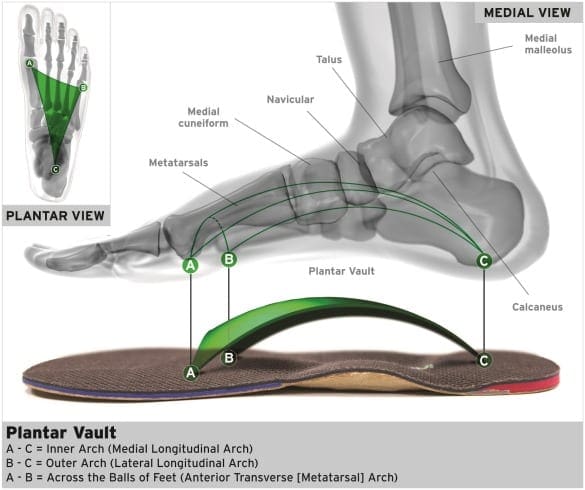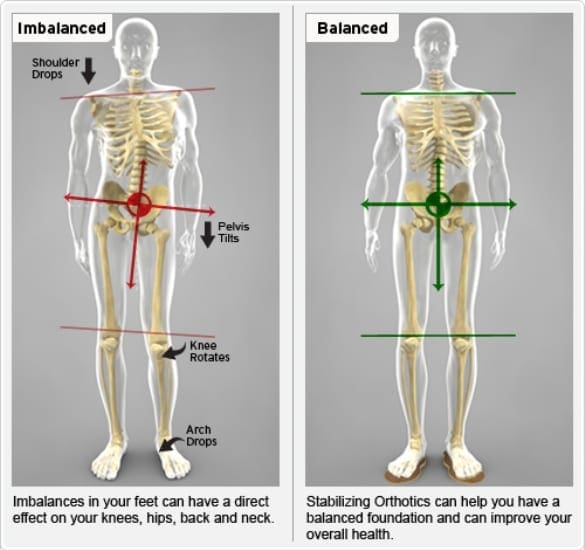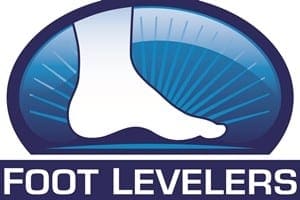Custom Orthotics | When it comes to standing, walking or running, your body functions as a complex “biomechanical kinetic chain”. To properly handle all the physical stresses produced by this activity and to perform at its best, your body’s various bones, muscles and joints must be in the right position and working together correctly. If one link in this chain begins moving abnormally, it can affect adjacent links by placing unusual demands on them and causing them to compensate in ways they were never built to do. This compensation, in turn, can then affect other links in the chain. Not surprisingly, this can make movements less efficient and cause additional wear and tear throughout the rest of the system, particularly on soft tissues.
The foot plays a unique and important role. At the same time that it is capable of supporting a great deal of weight, it is also able to move with the power and precision necessary for balance and agility. For its sheer strength and flexibility, the foot is an engineering masterpiece. It is also complex. The foot contains a quarter of the body’s bones in a very compact area and is built around a set of three independent arches that form a sort of “vault” that distributes the body’s entire weight. Unfortunately, when one arch in the foot is compromised, the other arches must take on additional stresses. This usually leads to further injury.

Structural problems in the feet—including pronation (a tendency to roll inward) and supination (a tendency to roll outward) as well as asymmetries on either side—can lead to the misalignment of joints higher up in the body, from the ankle and knee to the pelvis, spine and neck. While the body is brilliantly designed to compensate for its own imperfections, even seemingly small ones can eventually add up, causing chronic pain and reduced function. Some foot problems can also make it much more likely for a person to suffer from acute conditions such as shin splints and plantar fasciitis.
The body assessment image below shows how imbalances in the feet can lead to knee rotation, pelvic tilt and shoulder drop. These imbalances in the body can be caused by pronation and supination of the foot. These instabilities can lead to conditions such as plantar fasciitis, knee pain, hip pain, back pain, and neck pain. By contrast, a properly aligned body will have symmetrical feet, level knees, pelvis and shoulders. Wearing Stabilizing Orthotics may help alleviate imbalances and conditions caused by those imbalances.

Custom Foot Orthotics (sometimes called “spinal pelvic stabilizers” or “stabilizing orthotics”) are specially-fitted prescription shoe inserts that work to stabilize and balance the feet. While they can help to relieve immediate, localized symptoms such as fatigue or pain in the foot or ankle, they can also be instrumental in addressing musculoskeletal misalignment elsewhere. Many patients have found that they reduce stress—and pain—in the knees, pelvis and back. In this way, custom Foot Orthotics can be a very important complement to our other treatments, including chiropractic care and massage therapy.

At Active Family Chiropractic Care Center, we use the new V7+3D™ with BlueFoot 3D™ scanner from Foot Levelers to scan each patient’s feet. The red areas on the V7+ scan show where your feet are applying pressure. Loss of arch height–which results in more red areas appearing in the middle of the foot–can indicate flattening and rolling of the feet. Our state-of-the-art system also shows the percentage of imbalance for each foot. A higher number indicates greater pronation on that side of the body.







